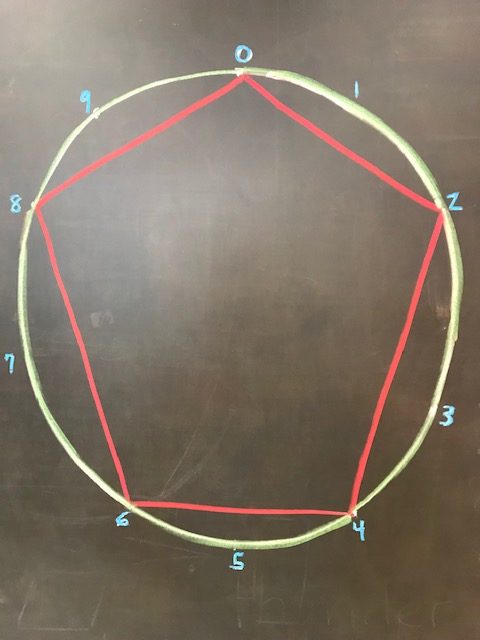In many schools, children learn by a rote method. While it is clear that there has to be some repetition of the material that children are to learn, repetition and practice can be a physical and full-body experience.
For example, the 2nd Grade is learning the multiplication tables. To learn something like the tables you would think there is only one way to do it. Most schools would repeat them orally, write them a lot and work with them in such a way that the children would be repeating them over and over. What if there was another way?
At our school, multiplication tables take on a new interest. We begin in 1st Grade by skip counting. 2,4,6, etc. for the 2 times table and 3,6,9,etc. for the 3 times table. This can be accomplished with bean bags and clapping games(1) Throwing the bean bag while reciting the products of the times tables helps a child integrate the knowledge not just in their minds but into their limbs. When it comes time to work with the multiplication tables in 2nd Grade they will have more complete knowledge of the material because they used their mind and their limbs integrating the material into their being.
In 2nd Grade, the children move on to the concept of multiplication always taking into consideration how to present it in the most integrated way for mind, body, and spirit. One method is to draw a circle and mark 10 points around the circle evenly (0-9). Based on the product, you draw lines from each point around. (For example, 2 is 2 x 1, 4 is 2 x 2, etc) Below is an example, can you guess which times table it represents? From this, we get a geometric form that the children can see; as we go through each table different forms appear as if by magic! This adds another dimension to learning the multiplication tables, and also lays a foundation for geometry later.

Multiplication tables are only one subject that can utilize a more physical method of learning. In first and second grade, where our main blocks are 4 processes of math and language arts, many aspects of these can also lend themselves to this. Addition and subtraction can be learned through games that involve number lines made of chalk outside. Each child can add and subtract numbers while standing on a number line and play with the qualities of numbers that are on the line. They can also create a hopscotch board using the answers to addition and subtraction problems and the children need to jump on the answer to the problem. Language arts and speech take a fun twist when combined with drama and acting out plays, cursive writing can be introduced first in clay, then written carefully in their books.
Learning can be a full-body experience that brings in every aspect of a person to learn the concept. By making this active and fun, we stimulate the child’s will and foster a love of learning.
By Laura Barrett 1/2nd Grade Teacher
(1)Henning Anderson, Active Arithmetic, (Waldorf Publications, 2014), 95-101